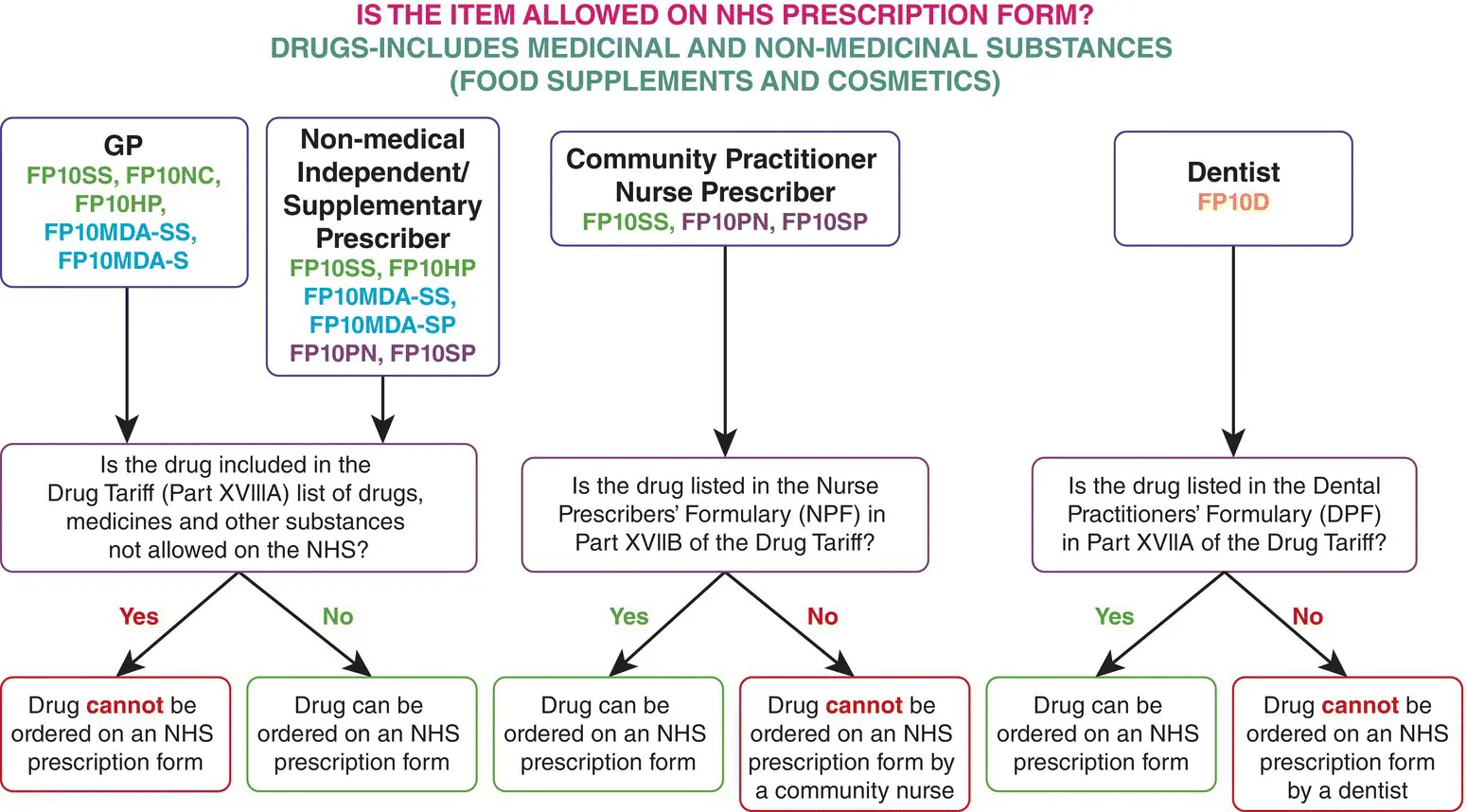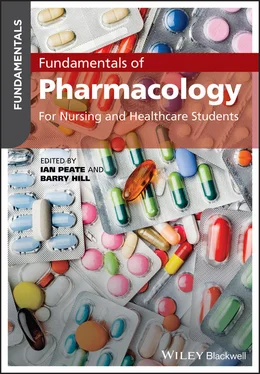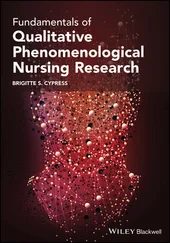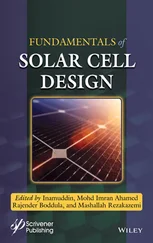What The Drug Tariff does
The Drug Tariff outlines information such as:
what will be paid to pharmacies for the NHS services provided (for example, the cost of drugs and appliances supplied against an NHS prescription);
rules that need to be followed when dispensing items;
drug and appliance prices.
How to tell if a medicinal product is allowed on prescription
The ‘blacklist’ can be found in Schedule 1 to the NHS Regulations 2004 and is found in the Drug Tariff (part XVIIIA); it is a list of medicinal products which cannot be prescribed on the NHS. Any medicinal product not on the ‘blacklist’ can be prescribed on the NHS. Whiskey, for example, is not on the blacklist, so a prescription for this item would be passed for payment by NHS Prescription Services. The prescriber may, however, be questioned during the auditing process about the appropriateness of prescribing this item at NHS expense. As a general rule, if a branded (proprietary) product is listed on the ‘blacklist’ it cannot be prescribed on the NHS. Many of the medicinal products on the ‘blacklist’ are available over the counter for people to buy, while some do not have enough evidence to show their efficacy.
The PSCN flow chart ( Figure 2.4) can be used to help identify whether an item is allowed to be dispensed on an NHS prescription form. Different practitioners may use different prescription pads or resources (seen below as FP10, FP10SS, FP10SP*).
If a medicinal product, or device, is prescribed that is not on the Drug Tariff, it cannot be dispensed.
Go to the Drug Tariff ( https://www.nhsbsa.nhs.uk/pharmacies‐gp‐practices‐and‐appliance‐contractors/drug‐tariff) and see which of the following products are blacklisted and should not be prescribed on the NHS.
ferrous sulfate compound tablets BP
Gaviscon granules
Lemsip flu strength
senokot tablets.

Figure 2.4 How to determine if a drug or devise can be prescribed on the NHS.
Other guides to prescribing
The Joint Royal Colleges Ambulance Liaison Committee (JRCALC) clinical guidelines
The Joint Royal Colleges Ambulance Liaison Committee Clinical (JRCALC) Guidelines is a helpful resource for paramedics and other healthcare professionals, in emergency care, on the road and in the community. JRCALC combines expert advice with practical guidance to ensure uniformity in the delivery of high‐quality patient care. The book, available as either a comprehensive reference edition or pocket guide, covers a wide range of topics, from resuscitation, medical emergencies, trauma, obstetrics and medicines, to major incidents and staff wellbeing. It includes an extensive UK drugs formulary and Page for Age drugs tables to assist in making medicines administration simple. A digital version, via an app, of the official JRCALC guidelines is also available for pre‐hospital clinicians to download.
There are also numerous prescribing and drug handbooks available, predominantly developed and produced for healthcare staff within the United States (US).
They can be a useful resource, but be aware the recommended medicines within these guides will not be based on UK NICE/SIGN guidelines and/or the medicinal products may not even have a license to be used within the UK.
You may also come across other prescribing guides (in electronic and paper format) such as ‘Prescribing Drug Therapy’. This guide is written for Advanced Practice Registered Nurse (APRN) students and practitioners in the US who prescribe drugs for acute, episodic and chronic health problems. This guide provides details on treatment details for more than 600 diagnoses for healthcare providers in all primary care settings. Drug information is presented in a condensed and summary format for ease of use. The print format includes an eBook with digital updates to assure immediate access to essential information.
The guide is simple to use with diagnoses listed alphabetically. For each diagnosis there is a list of:
medicinal treatment recommendations;
drug choices listed by generic name;
Food and Drug Administration (FDA) pregnancy category;
generic and over‐the‐counter availability;
adult and paediatric dosing regimens;
brand names, forms of dosage and additives;
other clinically useful information, such as laboratory values to be monitored, patient teaching points and safety information.
Prescribing Drug Therapy also has an alphabetical cross‐reference index of drugs by generic and brand name, with FDA pregnancy category and controlled drug schedule.
The evidence base to prescribing: prescribing guidelines
There are many medications that can be used to treat the same condition; it is important to know which drug to use and when. To assist with choosing the most appropriate medication, in terms of efficacy, safety and cost effectiveness, clinical guidelines (where available) must be adhered to. Clinical guidelines are systematically developed statements to assist practitioners and patients make decisions about the most appropriate healthcare for specific clinical circumstances. Guidelines provide recommendations for effective practice in the management of clinical conditions where variations in practice are known to occur and where effective care may not be delivered in a uniform way. There are many guidelines available, but most are based on a consensus of ‘expert opinion’ or a non‐systematic review of the scientific literature. Prescribing clinical guidelines can be local or national ( Table 2.3provides some examples).
NICE prescribing guidance
NICE is a non‐departmental public body that provides national guidance and advice to improve health and social care in England.
NICE guidelines make evidence‐based recommendations on a wide range of topics including:
preventing and managing specific conditions;
improving health;
managing medicines in different settings;
providing social care and support to adults and children;
planning broader services and interventions to improve the health of communities.
Within each NICE guideline, there are recommendations regarding the care (including medications) and services that are suitable for most people with a specific condition or need. NICE guidelines are used by NHS England and NHS clinical commissioners to develop services and are a reference guide for healthcare professionals, with recommendations about medications that should and should not be prescribed. The guidelines also cover areas that patients should be able to manage themselves and obtain, if necessary, appropriate over‐the‐counter medications.
Table 2.3 Examples of local and national prescribing guidelines
| Local Guidance |
National Guidance |
| to your team, service or condition you are working withinNHS organisation/employergeographical region |
NICE or SIGN guidancenational networksclinical groupscharities |
In your area of practice, choose a medical condition that you are familiar with.
Check to see if there is a local (to your Trust/employer) and/or national guideline for this condition.
Is the guidance the same as within the BNF?
Are there are any differences in recommendations? If so, think why this may be.
Читать дальше













